One of the most rewarding things about gardening is seeing things grow day by day. Beans are a wonderful plant to experience the life cycle of flowering annuals with, as they advance quickly through distinctive phases and produce a recognisable and easy to harvest seed at the end.
Beans germinate when water is absorbed, first producing a radicle root to absorb nutrients from the soil. A hypocotyl stem, cotyledon leaves and epicotyl shoot then follow. The plant flowers, and once pollinated, begin to produce pods with the time to harvest depending on the variety.
Beans are a staple in the science classroom, as they clearly demonstrate the marvel of the plant life cycle to young botanists.
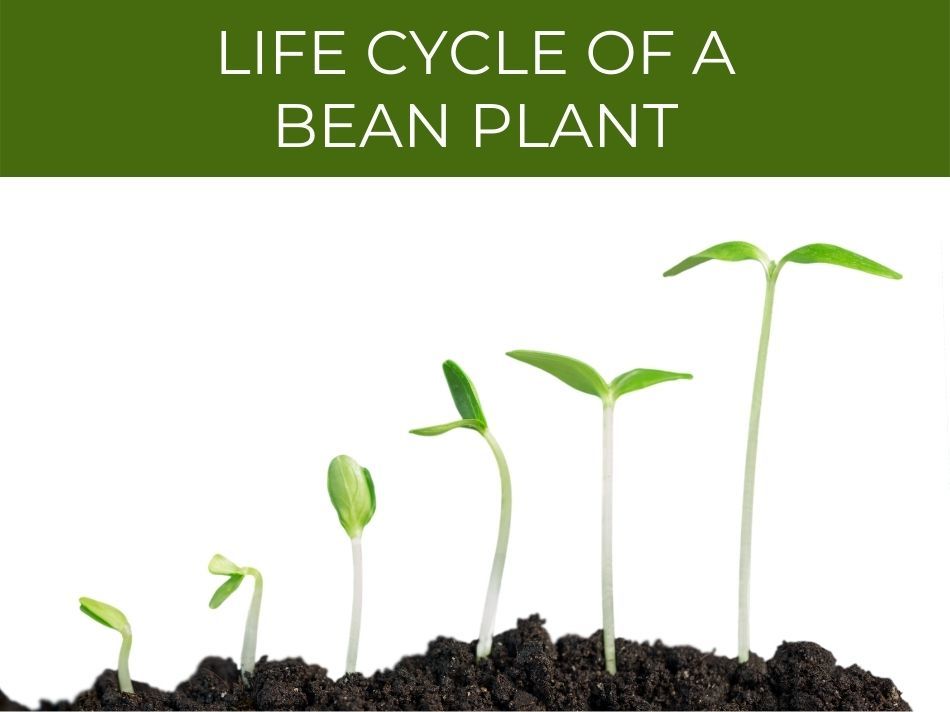
Life cycle of a bean plant
The seed of a bean plant is the same bean that you will find on your plate.
When beans absorb water, gibberellin is produced, which then triggers the production of amylase, breaking down starch to use for the germination process. A radicle root is put out, followed by the hypocotyl stem, the cotyledon leaves and epicotyl shoot. After enough growth, the plant flowers, which are pollinated and set new bean pods.
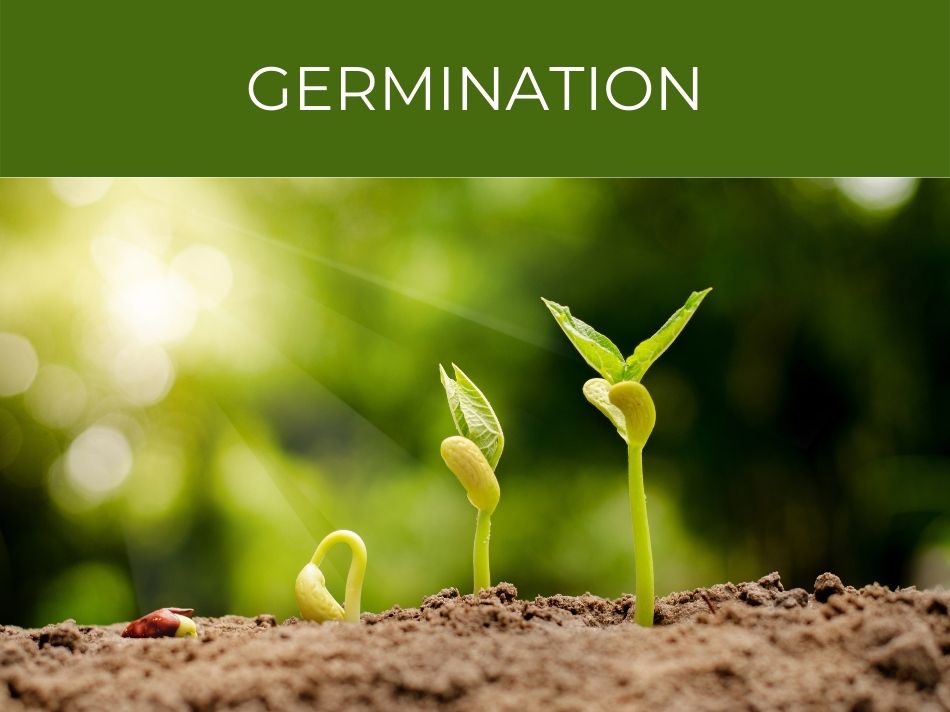
Germination starts when the bean absorbs water, causing a plant hormone called gibberellin to be produced.
Gibberellin produces amylase, an enzyme which breaks down the starch stored in the bean to be used as glucose for energy, or to build cell walls.
The hard, outer coating of the bean ruptures and the first root (the radicle) is put out into the soil to absorb more nutrients.
The hypocotyl embryonic stem is put out, from which more roots grow.
The germination process is sped up by warmth, and needs to happen quickly enough before the plant uses up all the starch contained in the bean.
The cotyledon emerges and produces the embryonic leaves (not the plant’s ‘true’ leaves which come later), followed by the epicotyl embryonic shoot.
The young plant grows more leaves and forms a bush, or a vine-like adult plant known as a pole, depending on the variety.
Bush beans are determinate, which means that the plant produces flowers and seeds all within a short period of time.
Pole beans are indeterminate, and continuously produce flowers and seeds throughout its growing season.
Some varieties grow as ‘half-runners’ and behave like a hybrid of bush and pole plants.
Bean flowers are also edible, providing a pretty addition to a garden salad.
Most beans self-pollinate, but produce much more crop with the aid of pollinators such as bees.
See our post on pollinating indoor plants.
Pollinators also increase cross-fertilisation, important if you intend on saving beans for your next crop, as they are more likely to be more fertile.
Once pollinated, the blossom quickly drops off and the bean pod begins to grow.
Once mature, the pods dry out and crack open to release new beans ready for the life cycle to begin again.
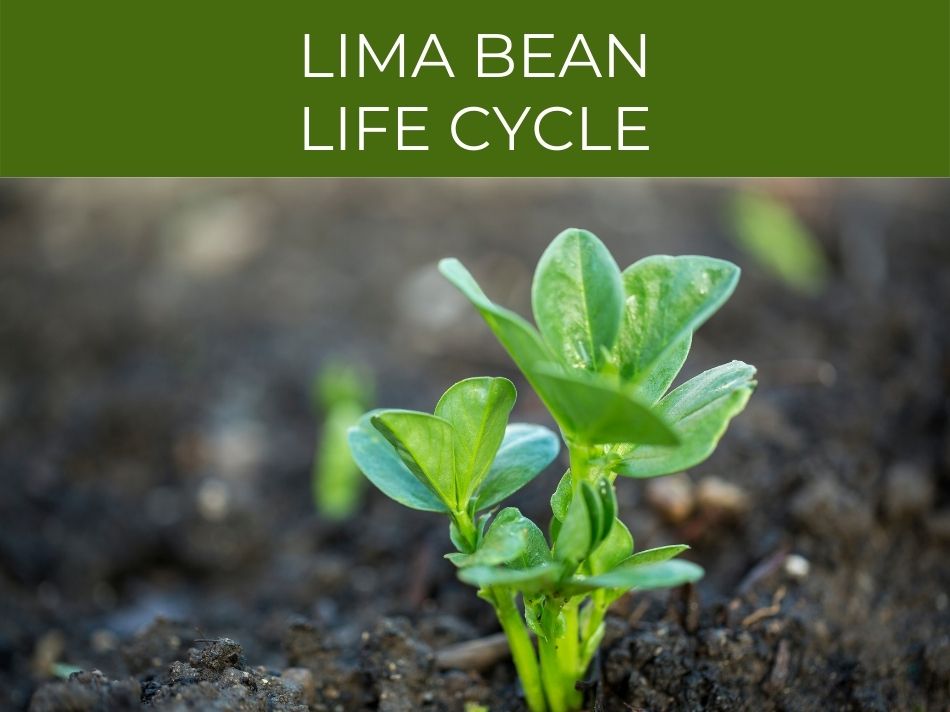
Lima bean life cycle
Lima beans are named after the capital of Peru, where they were first cultivated, but are also known as butter beans.
Lima beans can be grown as either bush and pole varieties, with many gardeners growing both to extend their cropping season.
Lima beans take around 75 to 80 days to produce a crop. The beans should be harvested when they firm up, but before they get too hard and begin to shrivel up. Lima beans can be grown as either bush or pole varieties.
Lima beans are annuals, meaning that they go through their entire life cycle in one year.
They can be harvested in around 75 to 80 days, when the beans become firm and plump inside the pod, but before they become too hard and shrivel.
The more you pick ripe beans, the longer the plant will continue to produce and the more beans it will produce.
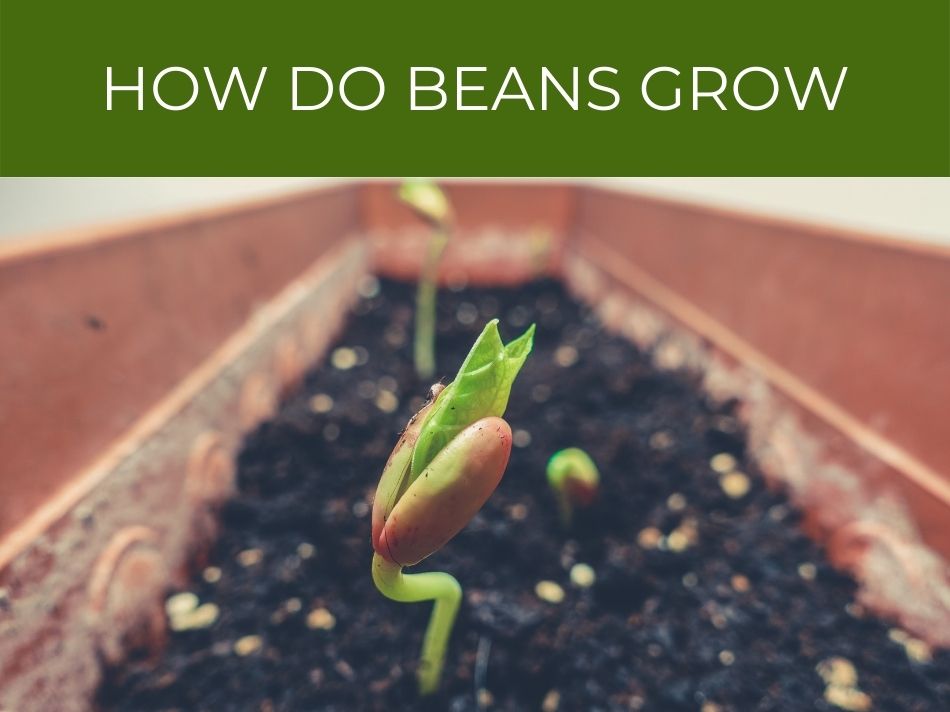
How do beans grow
There are around forty thousand different varieties of bean and around four hundred are produced commercially.
Beans are tender plants and should be planted directly into the soil once temperatures have warmed and the risk of frost has passed. Avoid nitrogen-rich compost and fertilizer as beans have a symbiotic relationship with nitrogen-fixing bacteria in the soil, and too much will produce foliage but no beans.
Beans are tender plants so they should only be planted in spring or early summer, once the soil has warmed and there is no risk of frost.
See our post on cucumbers – another frost tender plant.
The shallow, fragile roots of beans mean that they don’t transplant well, so it is best to sow beans directly where they are to be grown.
Check out our post on when to transplant.
You can soak beans overnight before planting to soften their hard, outer coating and speed up the germination process.
Once beans have been planted, do not water them until you see shoots, as they can rot in the ground before germination.
Beans do not need fertilizing, and should not be grown in nitrogen-rich compost, as they work with bacteria in the soil to produce their own nitrogen.
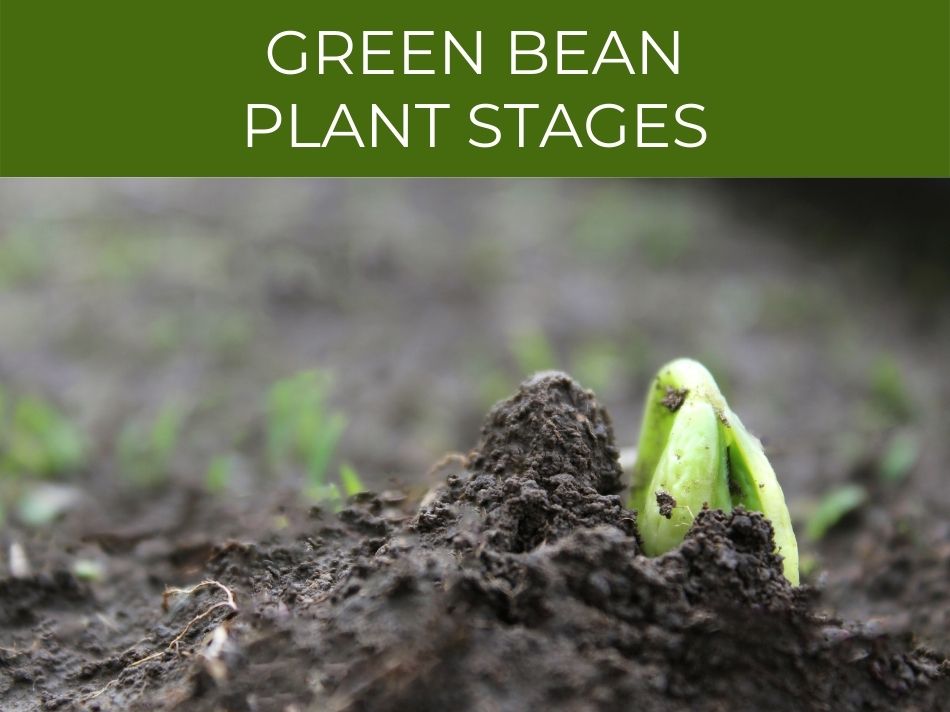
Green bean plant stages
Green beans are harvested for their edible pod after 45 to 60 days, and should be picked before the bean inside gets too big.
Green beans tend to be grown as a pole variety to produce a continuous crop, as they are eaten for the pod before the beans themselves mature. Most varieties are stringless, and are harvested after 45 to 60 days.
As with lima beans, green beans can be grown as annual bush or pole varieties, and the more they are picked the more they will produce.
Most green bean varieties are ‘stringless’ – they have been bred without the tougher strip that runs along the length of each pod.
Find out how much sun peas need.
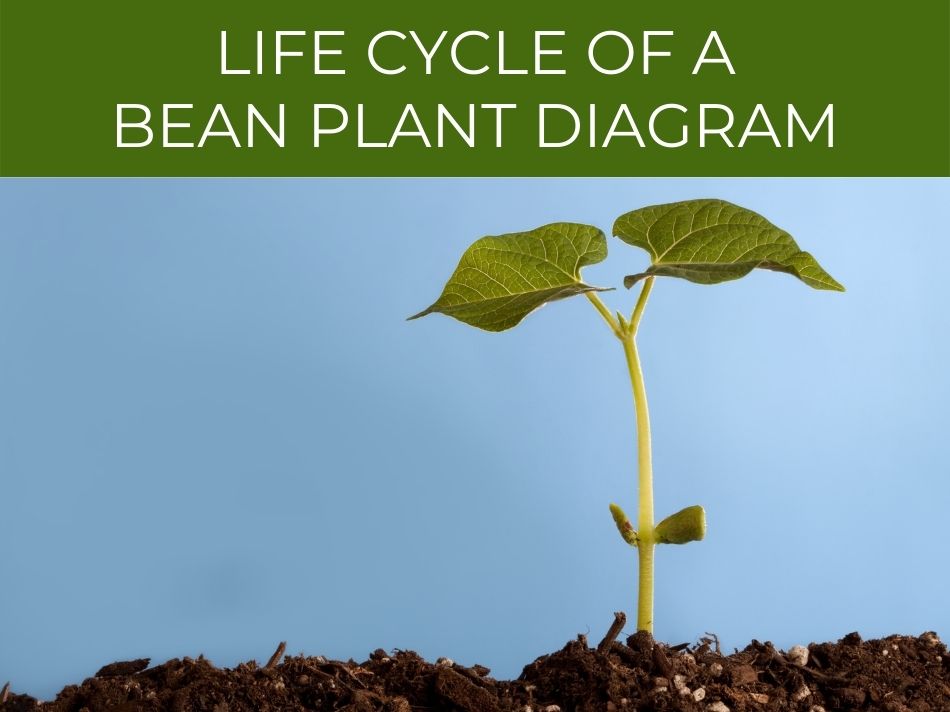
Life cycle of a bean plant diagram
The picture below shows the germination and early growth stage of the bean plant life cycle.
The diagram shows the germination and early growth stages of the bean life cycle. Following this, the plant will develop flowers, which are pollinated and then produce pods. The beans mature inside of the bean pod, which then dries and cracks open to release them.
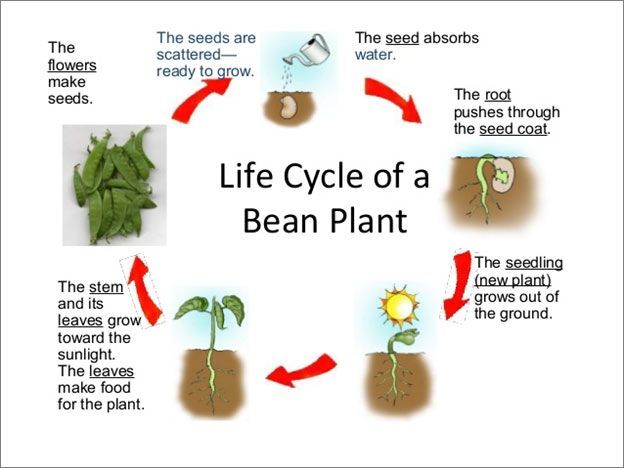
Following growth, the plant will produce flowers which are pollinated.
The plant then produces a pod, inside which new beans will grow.
Once the beans are mature, the pod will dry and crack open, releasing the beans that will start the life cycle over again.
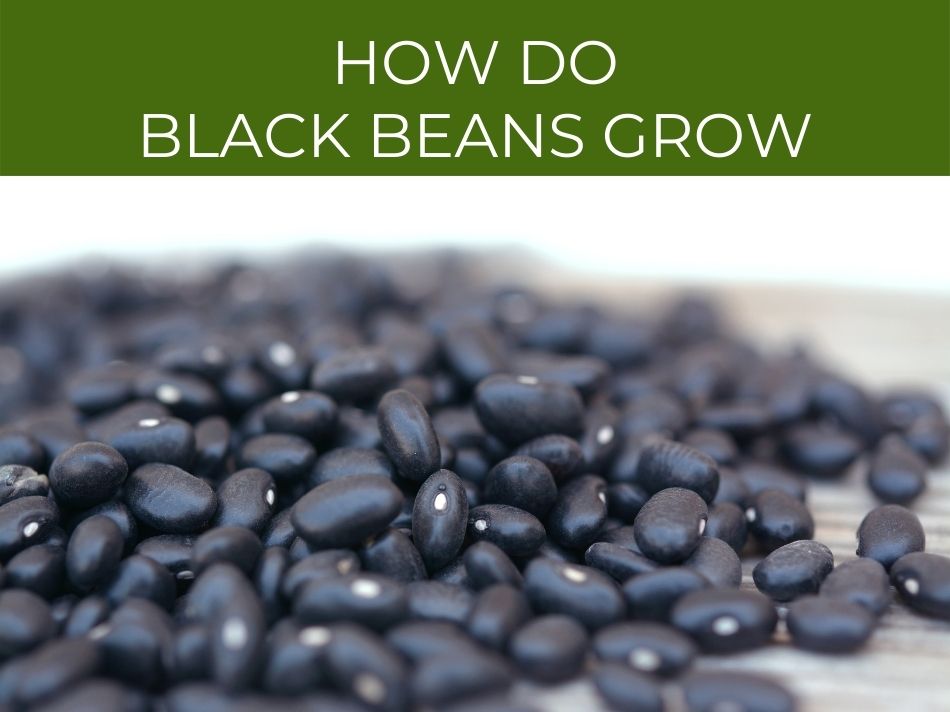
How do black beans grow
Black beans have dark, hard, outer shells which give them their nickname of the ‘turtle bean’.
The season for black beans is fairly long with harvesting after 90 to 140 days, so it is important to choose a spot where there will be plenty of sun even towards the end of summer.
Black beans have a long season with harvest after 90 to 140 days, so they need to be grown in an area where they will get six to eight hours of sunlight for the entire duration. They are harvested when most of the pods have turned brown or yellow.
Black beans should be harvested when most of the pods are dry and brown, or are turning yellow.
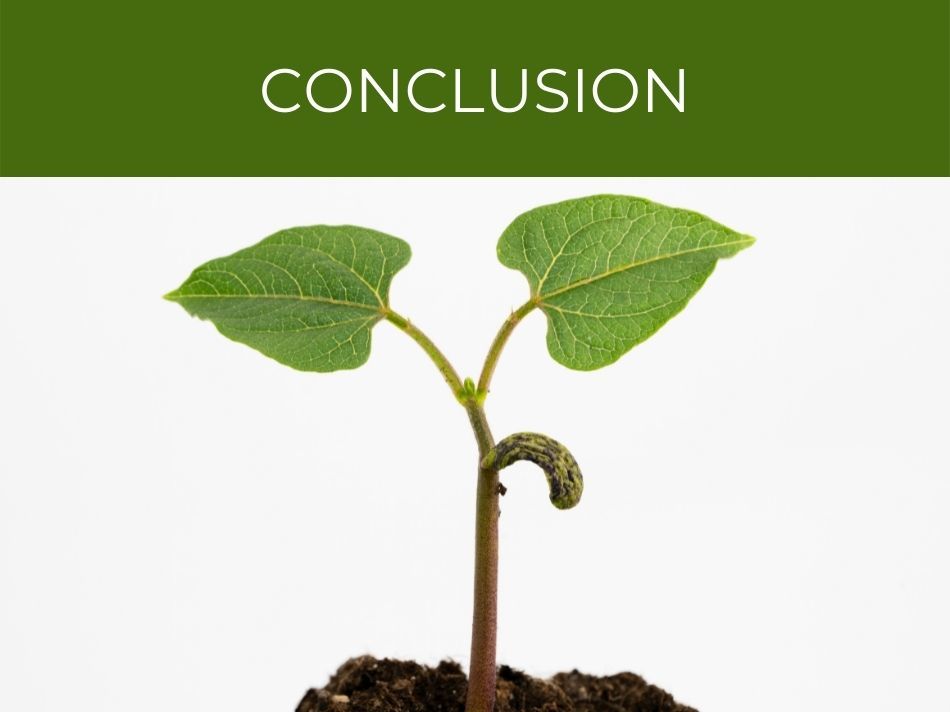
Conclusion
Beans are straightforward plants to grow, and are a great introduction to young botanists as the large seeds clearly show the life cycle of the plant.
With the range of varieties available to grow, you are even likely to find a bean that will be appreciated on the plate!

